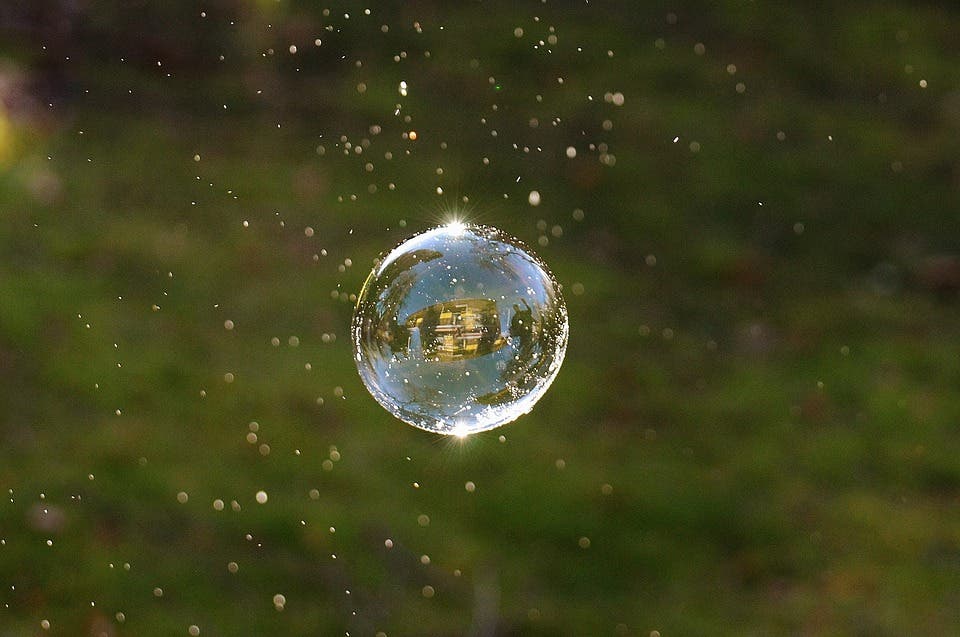Researchers at the University of Portsmouth have developed a novel way to make soaps — out of rice straw.

Rice straw is one of the most abundant, readily available, cheap, and underused resources. Now, an innovative research effort from the University of Portsmouth has shown that bails of rice straw could create a ‘biosurfacant’ (surfactants are basically soaps). The findings point the way towards non-toxic alternatives for petroleum-based materials used in a wide range of products.
Straw-scented soap
“Surfactants are everywhere, including detergent, fabric softener, glue, insecticides, shampoo, toothpaste, paint, laxatives and makeup,” explains Dr. Pattanathu Rahman, microbial biotechnologist from the University of Portsmouth and study co-author. “Imagine if we could make and manufacture biosurfacants in sufficient quantities to use instead of surfactants, taking the manmade chemical bonds out of these products.”
“This research shows that with the use of agricultural waste such as rice straws, which is in plentiful supply, we are a step closer.”
The team embarked on the project in an effort to find ways of reducing the need for artificial chemical compounds used in industry and daily life applications. They were aided in their research by members from the University of Portsmouth’s Centre for Enzyme Innovation, the Amity University in India, and the Indian Institute of Technology.
Their research focused on alternatives for chemical surfactants from day one, as this is a key chemical class in use today. Surfactants are the main active ingredient in the production of cleaning products, medicine, sunscreen, makeup, and insecticides. They’re so important because they can tie oil and water molecules together and lower the surface tension of liquids — i.e., they make it possible for us to wash oil and fats with water.

Image via Pixabay.
Dr. Rahman’s (who is also the Director of TeeGene Biotech Ltd in the UK) team sought to create a biosurfacant by brewing rice straw with enzymes. Rice straw was selected as it’s readily available waste produced in huge quantities every year. The team was also confident that the straw-based method could produce the kind of high-quality materials that manufacturing industries keep an eye out for. The method also has a number of positive ecological effects:
- Rice straw is a natural byproduct of the rice harvest, with millions of tons created worldwide every year; the method would help put that waste material to productive use.
- Tied to the previous point, farmers make a habit of burning rice straws to get rid of it. Finding an economic use for this material could help reduce emissions and potentially give farmers an extra source of income.
- A biosurfactant would help appease concerns about the impact of chemical surfactants used in household products, most of which end up in the oceans.
“The levels of purity needed for biosurfactants in the industries in which they’re used is extremely high,” Dr. Rahman explains. “Because of this, they can be very expensive.”
“However, the methods we have of producing them make it much more economical and cost efficient. It’s a very exciting technology with tremendous potential for applications in a range of industries.”
The study reports that biosurfactants could be a viable alternative to synthetic ones, with a possible market value of $US2.8 billion by 2023. Among their comparative advantages, the study lists their low toxicity, biodegradable nature, and specificity — the last point would help them meet the European Surfactant Directive.
“Most people consider soap to be an effective means of removing bacteria from their skin. However, we have flipped this concept on its head by discovering a way to create soap from bacteria,” Dr. Rahman concludes.
“They have antimicrobial properties suitable for cosmetic products and biotherapeutics. This approach will channelise the majority of the waste management solutions and could create new job opportunities.”
The paper “Statistical and sequential (fill-and-draw) approach to enhance rhamnolipid production using industrial lignocellulosic hydrolysate C6 stream from Achromobacter sp. (PS1)” has been published in the journal Bioresource Technology.


